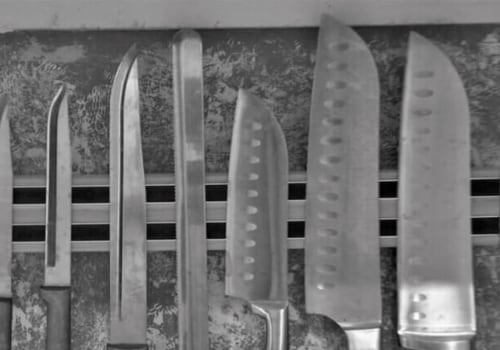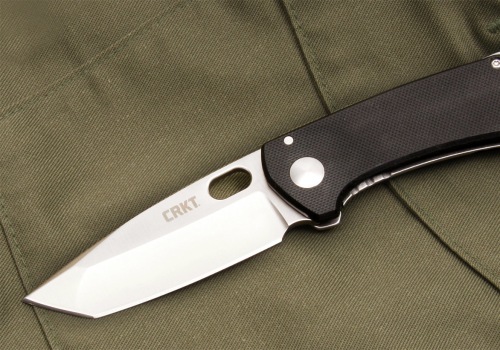When it comes to kitchen knives, paring knives are an essential tool for a variety of tasks. From peeling and slicing fruit and vegetables to trimming meats and fish, these knives are versatile and can make any cook's life easier. With so many different types of paring knives on the market, it can be tough to decide which one is best for you. That's why we've put together this review of the best paring knives available, so you can make an informed decision and pick the perfect one for your kitchen needs. A paring knife is a small, sharp knife used for precision cutting tasks in the kitchen, such as coring, peeling, and trimming.
It has a short blade usually between 2 and 4 inches long, with a straight or slightly curved edge. Unlike larger knives, such as chef’s knives, paring knives are designed for precise tasks and are not suitable for chopping or slicing large pieces of food. There are several types of paring knives available on the market, each with its own uses and advantages. The most common type is the traditional drop-point paring knife, which is characterized by a curved blade and a pointed tip.
Other types include the spear-point knife, which has a straight blade and a pointed tip; the sheepsfoot blade, which has a rounded tip and is great for peeling fruits and vegetables; and the bird’s beak knife, which is shaped like a hook and is perfect for intricate tasks such as garnishing. Having a good paring knife is essential for any kitchen. It allows you to perform delicate tasks with precision and accuracy, making it easier to achieve consistent results. In addition, paring knives are lightweight and easy to maneuver, allowing you to work quickly and efficiently.
When choosing a paring knife, there are several features to consider. The most important factor is the material of the blade. High-carbon stainless steel blades are sharp and durable, while ceramic blades are extremely sharp but fragile and require extra care. The handle material is also important; wood handles provide a comfortable grip but can be slippery when wet, while rubber handles offer excellent grip even when wet.
Additionally, you should consider the shape of the blade; drop-point blades are great for peeling and coring while spear-point blades are better suited for intricate tasks such as carving vegetables or garnishing dishes. Each type of paring knife has its own advantages and disadvantages. Traditional drop-point blades are versatile and easy to use, but they may not be precise enough for some tasks. Spear-point blades offer greater precision but can be difficult to maneuver.
Sheep’s foot blades are great for peeling fruits and vegetables but are not suitable for carving or garnishing dishes. Bird’s beak knives offer excellent precision but can be difficult to control. When it comes to finding the best paring knife for your needs, there are many excellent options on the market. Some of the top-rated models include the Wusthof Classic Paring Knife, the Victorinox Swiss Army 3¼-Inch Paring Knife, and the Zwilling J.A.
Henckels Twin Pro Paring Knife. All of these models feature high-quality materials, comfortable handles, and precise blades that make them suitable for any kitchen task. If you’re looking for a budget option, you may want to consider the Mercer Culinary Genesis Forged Paring Knife. This model features a full-tang German stainless steel blade that is corrosion resistant and offers excellent edge retention. It also has a comfortable ergonomic handle that provides a secure grip even when wet. When comparing models, it’s important to consider the size of the blade and how it affects your ability to perform certain tasks.
You should also consider how comfortable the handle feels in your hand and how well the blade holds its edge over time. Additionally, it’s important to look at reviews from other users to get an idea of how well each model performs in real life. When using a paring knife safely and effectively, it’s important to keep your fingers away from the blade as much as possible. Always use a cutting board when possible to protect your hands from accidental cuts. It’s also important to keep your knife sharpened with a honing steel or sharpening stone; this will ensure that you get precise results every time.
Features to Consider
When selecting a paring knife, there are several features to consider, such as blade material, handle material, and blade shape.Each of these features provides different benefits, and understanding what each feature offers can help you choose the best paring knife for your needs.
Blade Material:
The material used for the blade of a paring knife is important to consider. Generally, the best blades are made from high-quality stainless steel or carbon steel. Stainless steel is resistant to corrosion and staining, making it a great choice for any kitchen. Carbon steel blades are harder than stainless steel and have better edge retention.However, carbon steel is more prone to rust and requires regular maintenance.
Handle Material:
The handle of the paring knife is also an important factor to consider. The most common handle materials are plastic and wood. Plastic handles are lightweight and easy to clean, while wooden handles provide a more classic look and feel. If you’re looking for a more ergonomic handle, look for one with an ergonomic shape or cushioning material.Blade Shape:
The shape of the blade is also important.The most common shapes are clip point, spear point, and sheepsfoot. Clip point blades have a curved edge that makes them great for slicing and peeling. Spear point blades are sharp at the tip and make them ideal for piercing tasks. Sheepsfoot blades have a straight edge that makes them great for chopping vegetables. When selecting a paring knife, consider these three features to choose the best option for your needs.
Professional chefs may prefer carbon steel blades with wooden handles, while home cooks may prefer stainless steel blades with plastic handles.
Types of Paring Knives
Paring knives are essential tools in any kitchen. There are a variety of types of paring knives, each with their own advantages and disadvantages. The traditional paring knife is the most common type and is a versatile tool for peeling and trimming fruits and vegetables. Serrated paring knives have a saw-toothed edge that makes them ideal for cutting soft-skinned fruits and vegetables.Bird’s beak paring knives have a curved blade that is great for creating decorative cuts. Finally, offset paring knives have a bent handle that makes it easier to keep your knuckles away from the cutting board when slicing. Traditional paring knives are versatile and can easily be used for peeling, trimming, and other tasks in the kitchen. They are available in a variety of sizes and shapes, making them a great choice for many different tasks.
However, they can be difficult to sharpen and are not ideal for cutting harder foods such as cheese or nuts. Serrated paring knives have a saw-toothed edge that makes them perfect for cutting soft-skinned fruits and vegetables. The serrated blade can easily cut through the skin while protecting the delicate flesh underneath. They are also great for slicing tomatoes, peaches, avocados, and more.
However, they can be difficult to sharpen and are not suitable for harder foods. This type of knife is often used for creating intricate designs on fruits or vegetables such as tomatoes, peppers, or cucumbers. However, it may take some practice to master the technique required to create these delicate shapes. Offset paring knives have a bent handle that makes it easier to keep your knuckles away from the cutting board when slicing.
This type of knife can also be used for peeling, trimming, and other tasks in the kitchen. However, because of its design, it may require more strength when cutting through tougher foods.
Best Paring Knives
When it comes to finding the best paring knives on the market, there are a few key features to consider. Firstly, look for knives with a sharp blade made from high-quality stainless steel. This will ensure that your knife is durable and able to handle tougher tasks.Secondly, look for a comfortable handle that will fit your hand comfortably and allow for easy maneuverability. Finally, make sure the knife is lightweight and easy to carry around. For budget-friendly options, consider the Victorinox Paring Knife and the Wüsthof Classic Ikon Paring Knife. Both of these knives feature a 3.5-inch blade made from high-carbon stainless steel, making them highly durable and able to tackle tougher tasks.
Additionally, their handles are ergonomically designed for a comfortable grip and easy maneuverability. If you’re looking for something a bit more luxurious, consider the Global G-2 Paring Knife and the Zwilling Pro Paring Knife. The Global G-2 features a molybdenum/vanadium stainless steel blade that is highly durable and resistant to rust, while the Zwilling Pro boasts an ice-hardened stainless steel blade that ensures long-lasting sharpness. Both knives also feature an ergonomic handle that is comfortable to hold and easy to maneuver.
For those looking for something truly unique, consider the Shun Classic Paring Knife. This knife features a handcrafted Damascus-clad blade made from 34 layers of stainless steel and two layers of VG10 steel. It also features a D-shaped ebony Pakkawood handle that is comfortable to hold and provides excellent control. No matter which knife you choose, all of these paring knives offer superior performance and durability.
They are perfect for tackling any kitchen task with ease and can stand up to everyday use in the home or restaurant kitchen. With so many options available on the market, you’re sure to find one that meets your needs. In conclusion, a good paring knife is an essential tool in any kitchen. It's versatile, portable, and easily accessible. When selecting the right paring knife for your needs, it’s important to consider the type of knife, its features, and your budget.
In this article, we’ve reviewed the best paring knives for any kitchen, from budget options to premium brands. We hope you found the information helpful in finding the perfect paring knife for your kitchen. Remember to do your own research and find the right knife for your needs. Your cooking experience will be greatly improved with the right paring knife!.







Leave Reply